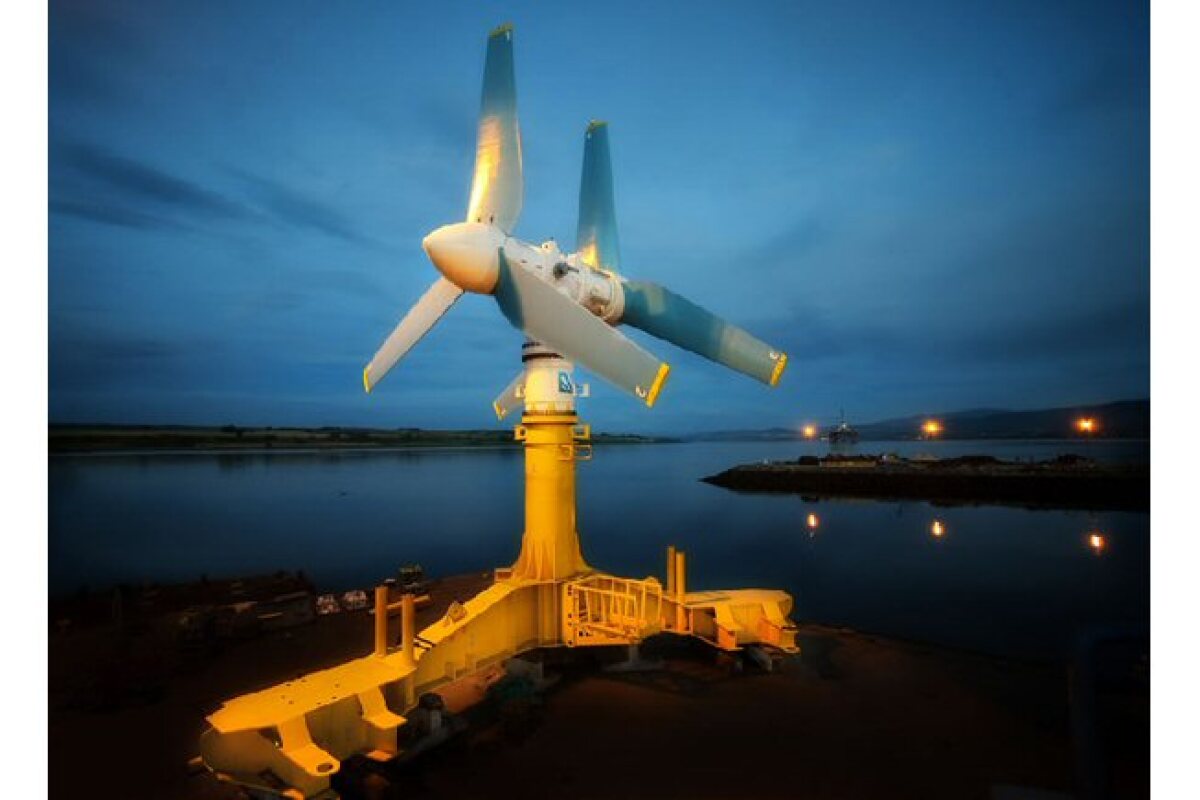The oil and gas fields of the North Sea have been meeting the power needs of the UK population for a number of years but such things have a finite lifespan and there are different ways to get power from the sea. The world's largest and most powerful tidal power turbine has just been unveiled by Atlantis Resources Corporation ahead of installation at a special berth at the European Marine Energy Center (EMEC) in Orkney, Scotland. The AK1000 will shortly be secured to the seabed off the choppy waters of Orkney and connected to the grid at EMEC. The company claims that the turbine is capable of generating enough electricity for 1,000 homes and is the first of a series of turbines to be deployed.
Atlantis Resources Corporation unveiled the AK1000 turbine at Isleburn Engineering in Invergordon, Scotland, where the system assembly took place. It will be transported from there to EMEC in Orkney later in the summer. Designed to withstand harsh weather and rough open ocean environments such as those found off the Scottish coast, the company says that the turbine will produce 1MW of predictable power at a water velocity of 2.65m/s – enough to satisfy the electricity needs of over 1,000 homes. The horizontal axis turbine weighs some 1,300 tonnes, stands over 73 feet (22m) high and has a rotor diameter of just over 59 feet (18m).

It's expected that it will have little or no impact on the environment due to the low rotation speed during operation and the unique twin rotor set with fixed pitch blades should eliminate the need for sub-sea nacelle rotation and so improve operational reliability.
Atlantis CEO Timothy Cornelius said that the turbine, "represents the culmination of 10 years of hard work, dedication and belief from all our partners, staff, directors and shareholders. The AK1000 is capable of unlocking the economic potential of the marine energy industry in Scotland and will greatly boost Scotland's renewable generation capacity in the years to come."

The unveiling of the AK1000 was shortly followed by an announcement by Scottish Power that it has plans to install hundreds of tidal turbines in the coming years. Equipment manufacturer, Burntisland Fabrications has just been awarded a contract to build a full-scale tidal turbine prototype for Scottish Power which will pave the way for a 10MW tidal energy project off the west coast of Scotland.






